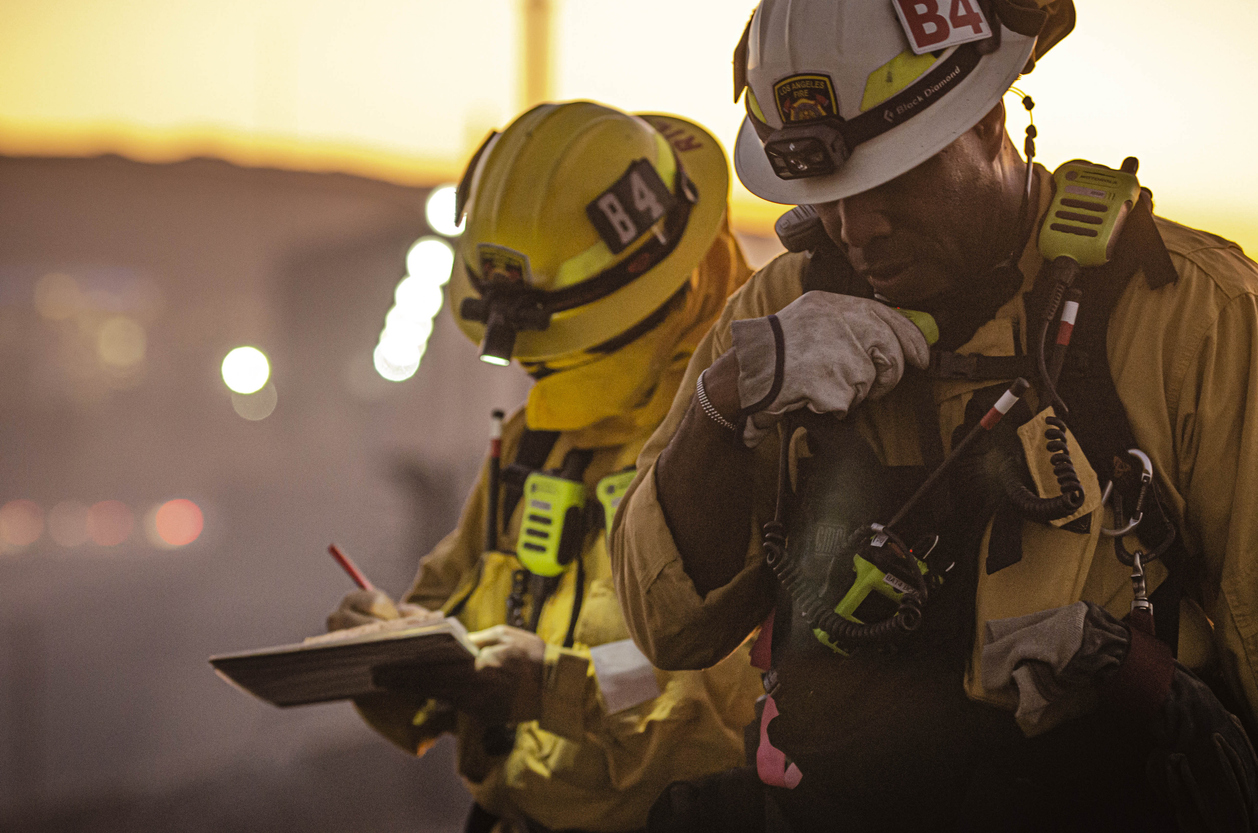
Coordinating a multi-unit fire response demands clear authority, coordinated communication, and risk-mitigation strategies that reduce liability exposure for everyone on scene. At the heart of this structure lies the Incident Command System (ICS), a standardized approach that verifies the designated Incident Commander (IC) assumes overall operational and safety responsibility. Without ICS, chaos can ensue — putting lives, property, and departments at risk. Understanding the relationship between command roles and liability, and how the right firefighter insurance services can help, is essential for insurance agents advising fire departments today.
Who Has the Overall Command During a Fire Emergency?
The IC takes the lead role in fireground operations, directing resources, assigning tasks, and overseeing scene safety. This command structure reduces confusion and enforces a hierarchy that supports faster, more organized decisions. But the IC isn’t just a tactical leader — they’re also a liability focal point.
When lines of authority blur or communication falters, the consequences can be severe. Imagine a structure fire where multiple responding units receive conflicting directions. If a responder enters a collapse-prone zone based on unclear orders, the liability ripple can affect individuals, departments, and municipalities. And while command training is essential, even well-prepared ICs face unpredictable hazards that make comprehensive fire department insurance a non-negotiable shield.
The Connection Between Scene Safety and Liability
Effective fireground safety isn’t just a matter of procedure — it’s a liability control measure. Perimeter control, hazard communication, and personnel accountability systems not only protect responders but also limit the likelihood of claims. Each of these protocols reinforces discipline and helps establish defensible documentation in the event of legal review.
Yet, even with flawless planning, unexpected incidents happen. Equipment fails. Weather shifts. Human error plays a role. That’s why having the right fire department insurance is a critical safeguard. General liability policies and supplemental coverage tailored for emergency response ensure that departments aren’t left financially vulnerable in the aftermath of operational mistakes or injury claims.
How Firefighter Insurance Services Protect Command Decisions
In high-pressure environments, incident commanders must make fast, complex calls — often with limited information. The last thing they need is the added weight of potential liability. That’s where comprehensive firefighter insurance services offer critical protection and peace of mind.
These coverage solutions aren’t just reactive tools — they empower leadership by reducing legal exposure and supporting confident decision-making:
- General liability coverage: Covers legal defense costs and damages resulting from command decisions made in good faith — even if those choices are later questioned.
- Accident and health coverage: Provides prompt medical care and compensation for injured responders, helping departments avoid delays and administrative stress.
- Operational error endorsements: Address liability tied to procedural lapses or equipment misuse, reinforcing department-wide accountability.
When supported by the right insurance framework, command officers can stay focused on strategy — not second-guessing.
Safer Scenes Start With Smarter Insurance
Effective command isn’t only about who holds the radio — it’s about how well departments prepare for the risks behind every decision. A strong command structure supported by targeted insurance policies creates a dual defense: reducing operational chaos and minimizing exposure.
If you’re working with fire departments, it’s time to review their current coverage. Do their policies address the realities of large-scale responses? Is command liability clearly defined and protected? At Provident FirePlus, our firefighter insurance services are designed to meet these challenges head-on.
Get in touch with us today to learn how our MGA expertise can help you safeguard your clients’ operations and leadership — one response at a time.
FAQ About Command Liability & Fire Department Insurance
Who has the overall command during a fire emergency?
The designated Incident Commander (IC) assumes full responsibility for operations, safety, and resource coordination on scene. This structure follows the National Incident Management System’s Incident Command System, which establishes clear authority and minimizes confusion during emergencies.
What is command liability in fire department operations?
Command liability refers to the legal and financial exposure a fire department or officer may face due to decisions made during an emergency response. These risks are especially high during multi-unit fires where communication errors or command breakdowns can lead to injuries or property damage.
How does insurance help protect command officers?
Firefighter insurance services, including general liability and accident & health coverage, provide legal defense, injury compensation, and protection against claims arising from operational decisions. This coverage allows incident commanders to focus on strategy — not lawsuits.
Why is fire department insurance essential even when safety protocols are in place?
Even with strict safety procedures, emergencies are unpredictable. Fire department insurance acts as a financial and legal safety net when equipment fails, decisions are questioned, or responders are injured — ensuring departments stay protected in worst-case scenarios.
About Provident FirePlus
Founded in 1902, our rich history involves the creation of custom firefighter insurance benefits in 1928. Today, Provident FirePlus continues to be a pioneer in developing insurance programs for firefighters, EMS providers, municipal entities, and law enforcement. In addition, we provide Special Risks insurance for various volunteer and nonprofit groups. Give us a call today at (412) 963-1200 to speak with one of our representatives.

